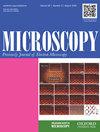Deep convolutional neural network image processing method providing improved signal-to-noise ratios in electron holography
IF 1.8
4区 工程技术
引用次数: 4
Abstract
An image identification method was developed with the aid of a deep convolutional neural network (CNN) and applied to the analysis of inorganic particles using electron holography. Despite significant variation in the shapes of α-Fe在电子全息术中提高信噪比的深度卷积神经网络图像处理方法
利用深度卷积神经网络(CNN)开发了一种图像识别方法,并将其应用于电子全息术分析无机粒子。尽管通过透射电子显微镜观察到α-Fe2O3颗粒的形状存在显著变化,但这种基于CNN的方法可用于识别分离的纺锤形颗粒,这些颗粒与其他经过配对和/或团聚的颗粒不同。对这些分离粒子的图像进行平均,显著提高了电子全息术观测的相位分析精度。该方法有望有助于分析仅显示小相移的纳米颗粒产生的弱电磁场。
本文章由计算机程序翻译,如有差异,请以英文原文为准。
求助全文
约1分钟内获得全文
求助全文
来源期刊

Microscopy
工程技术-显微镜技术
自引率
11.10%
发文量
0
审稿时长
>12 weeks
期刊介绍:
Microscopy, previously Journal of Electron Microscopy, promotes research combined with any type of microscopy techniques, applied in life and material sciences. Microscopy is the official journal of the Japanese Society of Microscopy.
 求助内容:
求助内容: 应助结果提醒方式:
应助结果提醒方式:


